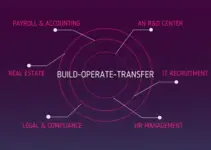Managing employees has changed a lot over the past decade, with the trend of working from home gaining momentum over the past years. Employees aren’t only separated by cubicles but now by cities, states, or even continents.
This shift has redefined where we work and how you lead your team. Adapting management strategies for remote teams has become crucial, highlighting the importance of featuring strong management skills in a resume.

As we navigate through these changes, you’re tasked with the challenge of ensuring productivity, fostering team cohesion, and maintaining the well-being of your employees without physically being in their presence, which is a lot to ask for but not impossible.
This article will take a look at tips for managing remote employees effectively, covering essential aspects such as project management tools, clear communication, regular meetings, team building, and organization.
By taking advantage of these strategies below, you can unlock the full potential of your remote teams, ensuring success in a virtual work environment.
Tips for Managing Remote Employees
1. Use the Right Project Management Tools
Remote work is possible thanks to new systems and technology that are constantly changing how we can be productive.
Project management tools are indispensable for streamlining workflow and enhancing team productivity. These tools provide a centralized platform for task assignment, progress tracking, and collaboration, ensuring that everyone is on the same page, regardless of their physical location.
Popular tools offer versatile functionalities tailored to various project needs, which can cover simple task management or even complex project planning and team communication.
Some good examples of these tools are:
- Asana
- Trello
- Slack
For HR staff, integrating an HR Help desk can significantly improve the management of employee inquiries and HR-related tasks, fostering a more organized and responsive HR function.
Integrating these tools into daily operations requires a strategic approach. Start by identifying the specific needs of your team and the challenges you aim to address with the tool. Once selected, dedicate time for team training to ensure everyone is comfortable using the new tool.
2. Foster Clear Communication
Clear, concise communication is crucial when working outside the office to prevent misunderstandings and feelings of isolation between you and your staff. You, as a manager, must ensure effective communication by providing regular updates and establishing clear guidelines. This clarity helps set expectations and responsibilities, keeping the team aligned and focused.

Tools like Zoom and Microsoft Teams are essential for facilitating communication, offering features for both formal meetings and informal chats.
These platforms enable real-time discussions and virtual collaboration, helping to recreate office interactions.
Incorporating these tools into daily operations means creating an environment where open dialogue is encouraged. Regular check-ins and feedback sessions can maintain a sense of community, ensuring that every team member feels connected and informed.
3. Schedule Regular One-on-One and Team Meetings
Regular meetings with each member of your staff are a great way of maintaining connections and monitoring progress. These personal meetings provide a structured opportunity for team members to share updates, address challenges, strategize, and improve their productivity.
It’s both your and the employee’s chance to talk about individual concerns and feedback, fostering a supportive environment. By thoughtfully planning these interactions, you can ensure your teams stay connected and informed.
However, finding the right balance is key. Over-scheduling meetings can lead to fatigue and decreased productivity, while under-communicating can result in misalignment and a sense of isolation among team members.
4. Encourage and Facilitate Team Building
Team cohesion and relationship building are crucial for remote teams to thrive, which is much harder to achieve when everyone works from home. Without the natural interactions that occur in an office setting, remote teams need deliberate efforts to foster a sense of belonging and teamwork.
In-person and even virtual team-building activities can bridge this gap, offering creative ways to connect and engage.
If you and your team live in the same city, you can schedule a meet-up and participate in an escape room, karaoke, or other fun and relaxed activity to get to know one another better.
Creating spaces for casual conversations, such as dedicated chat channels for nonwork topics, can help replicate the water cooler moments that contribute to team bonding.
5. Prioritize Organization and Time Management
Effective organization and time management are essential for remote teams to function efficiently. You can support your employees by implementing techniques and tools that enhance productivity and ensure tasks are completed on schedule.
Setting clear expectations and deadlines is fundamental, providing team members with a structured framework and clear objectives.
Various tools can be extremely helpful in assisting with organization and time management. Google Calendar allows for scheduling and sharing of meetings and deadlines, ensuring everyone is aware of upcoming commitments.
By prioritizing these aspects, you can manage all the difficulties of working from home while keeping a cohesive and productive workflow.
Last Remarks
Managing remote employees effectively depends on how you use your project management tools, foster clear communication, schedule regular meetings, encourage team building, and prioritize organization and time management. By being adaptable and flexible in these approaches, you can nurture a successful remote team.






